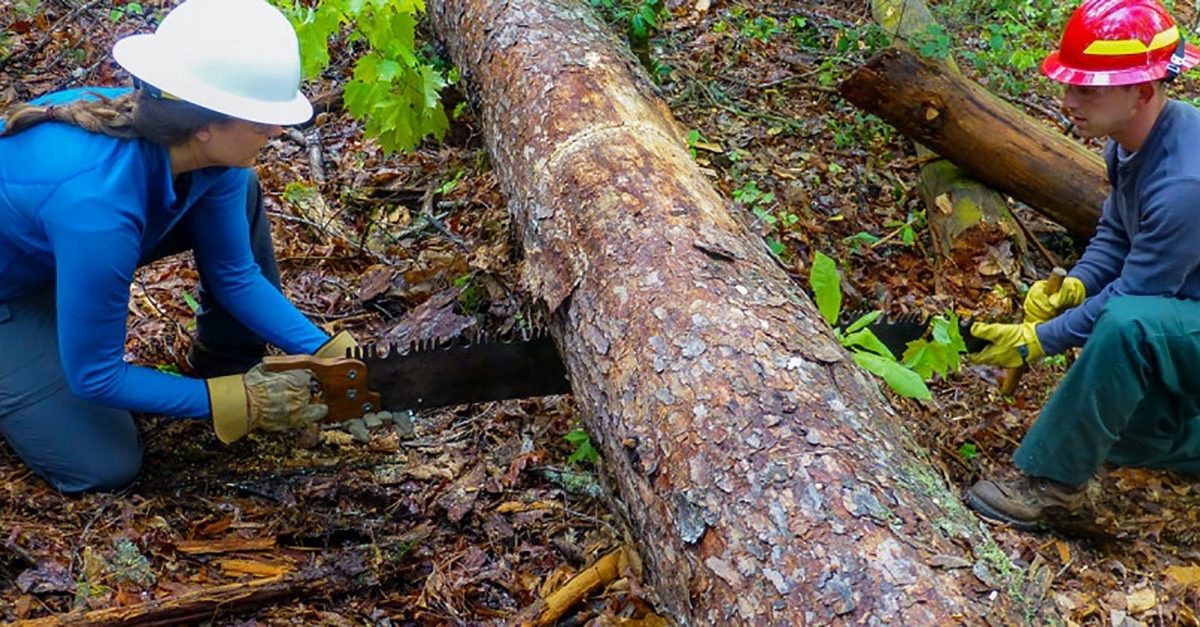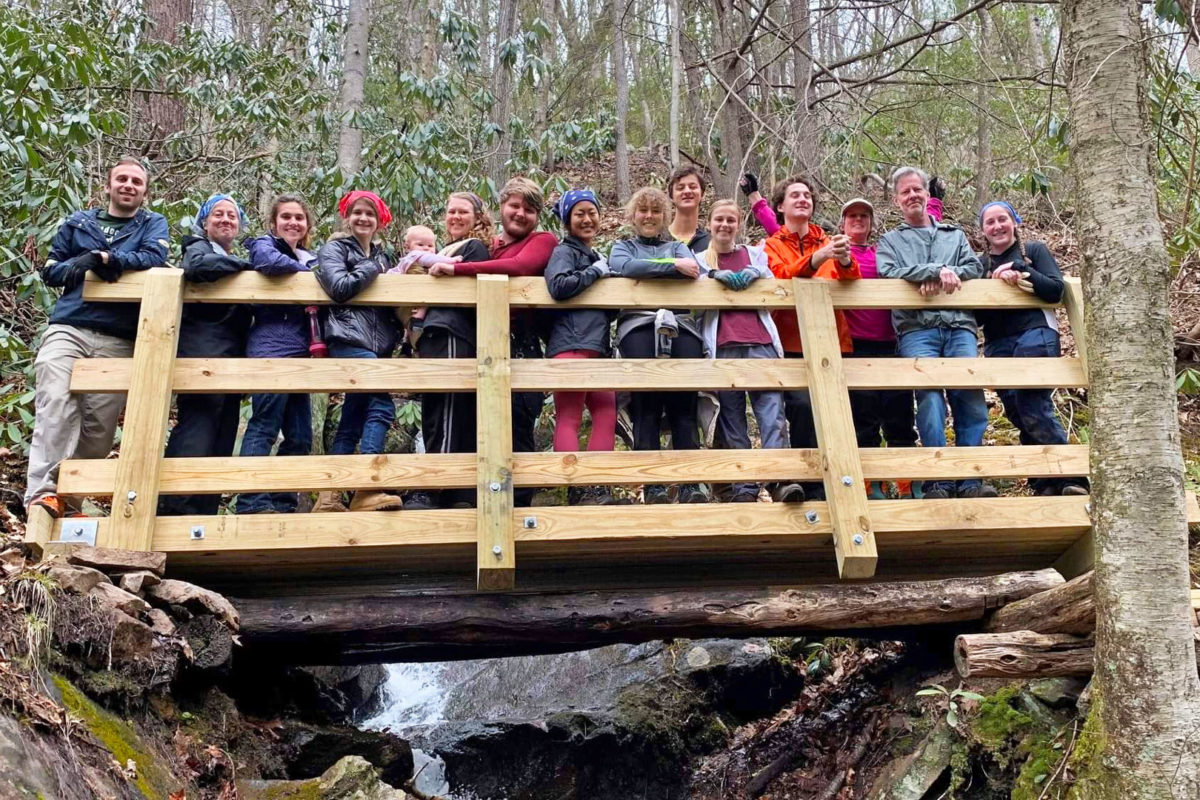By Jordan Bowman, ATC Director of Communications
A.T. Volunteers: Experts in Conservation
June 13, 2020
On August 14, 1937, the backbreaking work of hundreds of volunteers and state and federal partners made the impossible a reality: the final link of the Appalachian Trail (A.T.) was completed, fully connecting the footpath from Georgia to Maine.
As we look back on that accomplishment, it becomes clear that this was only the first chapter in the history of A.T. volunteers. The A.T. needed an army of volunteers to maintain and protect the Trail from the impacts of weather, encroachments, visitor use and other factors that would erode, diminish or endanger the A.T.
Previously, we highlighted the wide scope of roles for volunteers involved in A.T. conservation. Each year, roughly 6,000 volunteers use their conservation expertise and skills to keep the Trail maintained and open for over 3 million visitors. Just a few of these include:

Knowledge and Usage of Trail-Building Tools
Maintaining the Trail requires much more than a shovel and good intentions. From Pulaskis and mattocks to crosscut saws and drills, a wide variety of tools — and more importantly, the knowledge of how to use them effectively and safely — are essential for many of the volunteers on the frontlines of Trail maintenance.

Building and Repairing A.T. Structures
Carpentry and engineering may not be on the forefront of people’s minds when they think of a Trail volunteer’s work, but maintaining the hundreds of shelters, privies, bridges, footpath reinforcements, signage and other infrastructure — and sometimes completely rebuilding them — is essential for preserving the A.T. experience.


Natural Resource and Wildlife Habitat Conservation
Identifying native species along the Trail — and knowing how to effectively remove invasive species — are essential skills for maintaining and improving forest health. When threats like wavy-leaf basket grass and Asiatic bittersweet encroach on A.T. lands, it is vital to have skilled volunteers help prevent the A.T. landscape from being permanently impacted.

Visitor Education and Outreach
Being able to work on the Trail takes a specific set of skills. Being able to talk effectively to others about hiking safety, Leave No Trace principles, and ways to get involved in conservation is something else entirely. Volunteers who specialize in teaching others about the benefits of the Trail and help recruit others to protect it are essential for success in our mission.

Of course, Trail volunteers aren’t expected to possess the skills listed above on day one. A key part of becoming an A.T. volunteer involves training, ensuring that volunteers can work safely and build up their confidence. Our aim is to make sure volunteers feel prepared and comfortable in their roles from the outset, so that they return again and again to care for the Trail.
Through the development of the skills listed above (and many more), A.T. volunteers become the force needed to ensure the Trail is maintained and protected. For many, volunteering on the A.T. becomes a lifelong passion. One example (of many) is Dave Field, who was featured in our myATstory series. Dave has dedicated 50 years of his life to maintaining the Trail and sharing his skills with the next generation of A.T. stewards. Thousands of others share Dave’s commitment to A.T. conservation, working together across 2,000 miles of rugged Appalachian Mountain terrain to keep the dream of the Trail alive.
By supporting the ATC, you are helping us provide the training needed to ensure our volunteers are equipped not only with the tools they need, but also with the training and skills necessary to ensure the A.T. experience is available for everyone to enjoy for centuries to come.
Help ensure our A.T. volunteers have the support they need to maintain and protect the A.T. by making a donation today!
Discover More

Official Blog
The Scope of A.T. Volunteerism
For almost 100 years, volunteerism has been the bedrock of the Appalachian Trail and the ATC.

ATC's Official Blog
A.T. Footpath
Learn more about ATC's work and the community of dreamers and doers protecting and celebrating the Appalachian Trail.

Official Blog
A Commitment to Justice
The Appalachian Trail Conservancy has taken inventory of the social landscape within the Appalachian Trail community and across the United States, and we believe that by making meaningful changes, the A.T. can be a space that is inclusive, open and safe for all.
